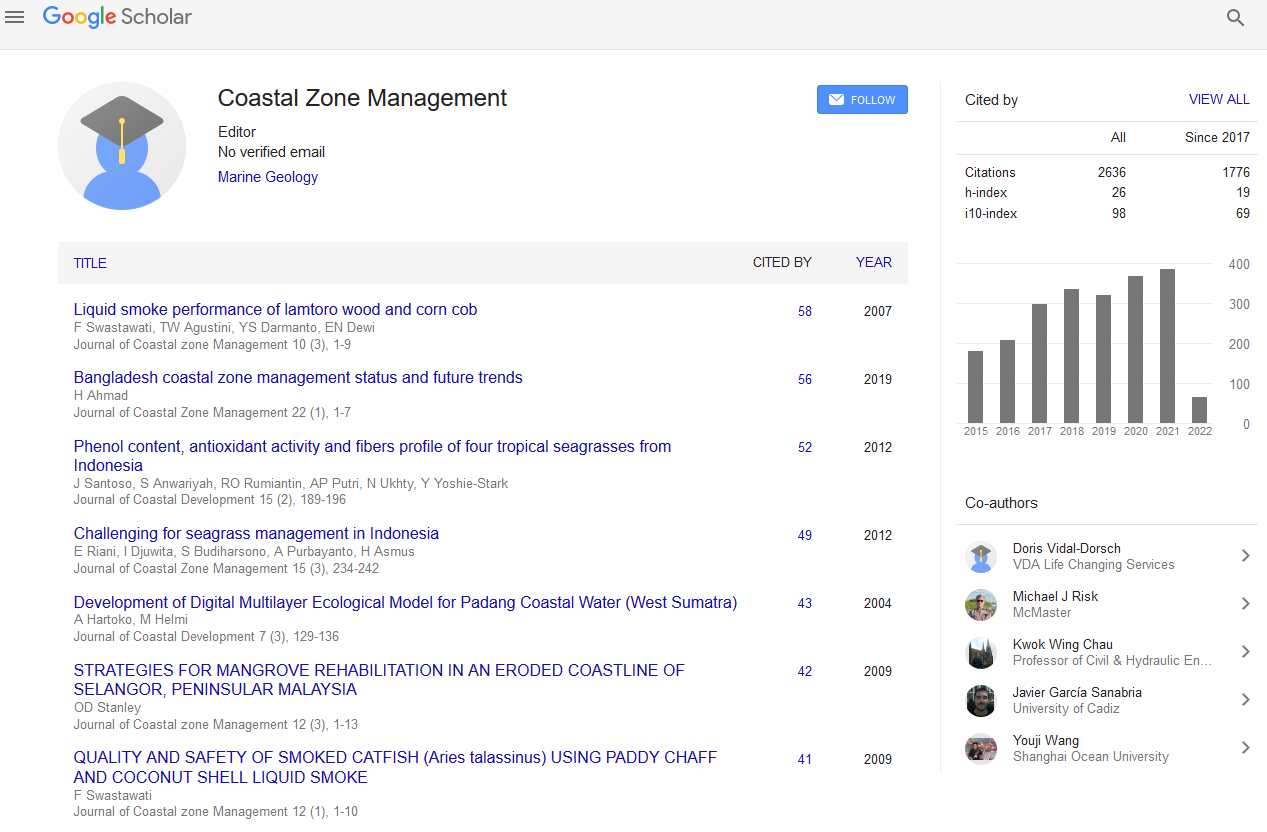Indexed In
- SafetyLit
- RefSeek
- Hamdard University
- EBSCO A-Z
- OCLC- WorldCat
- Publons
Useful Links
Share This Page
Journal Flyer

Open Access Journals
- Agri and Aquaculture
- Biochemistry
- Bioinformatics & Systems Biology
- Business & Management
- Chemistry
- Clinical Sciences
- Engineering
- Food & Nutrition
- General Science
- Genetics & Molecular Biology
- Immunology & Microbiology
- Medical Sciences
- Neuroscience & Psychology
- Nursing & Health Care
- Pharmaceutical Sciences
Abstract
The Effect of Different C:N Aand C:P Ratio of Media on the Content of Polyhydroxybutyrate in Biofloc Inoculated with Bacterium Bacillus cereus
Supono, Johannes Hutabarat, Slamet Budi Prayitno, YS Darmanto
Biofloc technology has added values in aquaculture management, both in water quality management and
feeding management. As an optional feed, biofloc is capable to enhance growth due to high protein content.
Bacteria, main component biofloc, can produce polyhydroxybutyrate (PHB) as reserve of energy and growth
accelerator for fish.
The aim of the research were to study the effect of the different C:N and C:P ratio of media on the content of
polyhydroxybutyrate in biofloc and to determine optimum media to produce high polyhydroxybutyrate
content in biofloc. The experiment was arranged in factorial with completely randomized design in three
replications. Treatments were C:N ratio of 15, 20, 25 and C:P ratio of 75, 100, and 125.
The result showed that C:N ratio and C:P ratio of media and their interaction affect the content of
polyhydroxybutyrate in biofloc. C:N ratio of 20 and C:P ratio of 125 resulted in most polyhydroxybutyrate
(29.25±7.376 mg g-1 biofloc dry weight). Ratio of C:N of media gave linier and quadratic responses and
C:P ratio of media gave linier one. Optimum polyhydroxybutyrate production was obtained at C:N ratio of
20.9 and C:P ratio of 125 resulting in 29.66 mg g-1 biofloc dry weight (2,97%)

